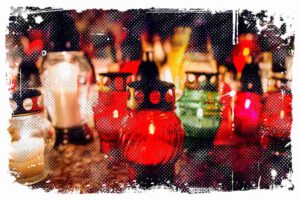Historically, Catholicism in Poland dates back to 966 when Mieszko I and his entourage were baptized in the Roman Rite. This event was groundbreaking in the history of our country, which let the country enter the Western European culture circle.

Catholicism and its history is a big part of Poland’s identity. Since middle ages it has played a major role in shaping the Poland’s culture and values. It can be seen in the way people live their lives and in the traditions that have been passed down for generations. Through the difficult time of partion, communism, it has shaped the way the country is today.
In this blog post, I will explore how Catholicism has evolved in Poland and what its current role is in Polish culture.
Origins and Evolution of Christianity in Poland – History
When Christianity first came to Poland, it faced challenges because of the strong pagan beliefs already in place. Missionaries did not try to suppress these existing practices and customs. Instead, they sought common ground between the two religions. They adapted pagan practices, rather than tried to eradicate them.
↳ PRO TIP: Do you like traveling? Then before you buy any ticket or book an attraction, check if it's available in this worldwide Viator Database. You may save a lot of money and time. No need to thank me :)
Historians claim that Christianity reached its peak in Poland during the Middle Ages. During this time, forms of pastoral care such as sermons, fasting, and burial of the dead were developed. Actually, they are still in practice today. Pilgrimages also became a common practice. In the 14th century, the worship of Mary became a fundamental aspect of Polish faith.
After the difficult period of the Reformation in Poland, Catholicism experienced a resurgence. Many people converted to the religion and joined monasteries. This period was also characterized by religious tolerance.
Unlike other western countries, Poland did not experience conflicts or wars on religious grounds. However, the 18th century marked the beginning of difficult times for Christianity in Poland as revolutionary movements that were not supportive of religion began to emerge.
Religion During the Partition Period
However, it wasn’t until the partition period (1795-1918) that the connection between being a Pole and being Catholic truly solidified. During this time, when Poland was stripped of its sovereignty, the Catholic Church became a symbol of a free Poland.
The clergy played an important role in the fight for independence, preserving the nation’s language and culture and resisting russification and germanization. Their efforts paid off, as by the early 20th century, over 90% of the Polish population in cities and villages was engaging in basic church practices. This is because during the partitions, churches were not just places of worship, but also hubs of social life and tradition.
The People’s Republic and Communism
The Catholic Church played a similar role during the period of the Polish People’s Republic (1952-1989). Many priests were arrested and tortured during this time, and some even gave their lives in the name of their faith. Despite the state’s persecution of religion and its associated repression, Poles did not turn away from the Church. It remained a source of support and hope during the hard times of communist dictatorship.
The election of Karol Wojtya as Pope strengthened the bond between Polish national consciousness and Catholicism. He served as Bishop of Rome and head of the entire Church from 1978 to 2005 as John Paul II. He was the first Polish Pope (and currently the only one) who sit on the Chair of Saint Peter. On April 27, 2014, John Paul II was canonized in the Catholic Church as a saint.
Mary, The Queen of Poland
It is also worth saying that for centuries, we have been referred to as a Marian nation. For many of you, it may come as a surprise, but the Mother of God (Mary or Maria) is known in Poland as the Queen of the Polish Nation. The justification for this title dates back to the 17th century, when the victory over the Swedes and the miraculous defense of Jasna Góra (1655) were attributed to the intercession of the Mother of God.
After these successes, King Jan Kazimierz made a vow on April 1, 1656, in the Cathedral of Lwów before the miraculous image of the Merciful Mother of God. The monarch placed the Republic under the care of Mary and declared her the special patroness of the Kingdom of Poland. He also promised to promote her worship and pledged to obtain permission from the Holy See to celebrate the feast of Mary as the Queen of the Polish Crown.
The patron of Poland are: Saint Stanislaus, Saint Adalbert, Saint Stanislaus Kostka and Saint Andrew Bobola.
There Are Many Catholic Churches in Poland
Currently, there are nine state-registered catholic churches in Poland. The most numerous is the Roman Catholic Church (Latin Rite), which holds 95.5% of the country’s population.
The others include:
- Greek Catholic Church (about 55,000 believers)
- Neo-Catholic Church (about 150 believers)
- Armenian Church (about 5,000 members)
- Polish Catholic Church (over 20,000 believers)
- Old Catholic Mariavite Church (nearly 24,000 members)
- Mariavite Catholic Church in the Republic of Poland (about 2,000 believers)
- Old Catholic Church in the Republic of Poland (1,300 believers)
- Polish National Catholic Church in the Republic of Poland (over 400 believers)
The Catholic Church has long been a pillar of Polish national identity. During the partition period in Poland in the 13th century, Archbishop Jakub Winka stood up to the spreading German culture by issuing an order to teach the truths of faith in Polish.
Conclusion
Christianity, particularly Catholicism, has a strong presence in Poland’s national culture. The values and principles of living according to Christian teachings are expressed through various forms of contemporary culture.
In Poland, many cultural initiatives take place every year, ranging from religious festivals to art fairs showcasing Christian art both in Poland and internationally. The Church also preserves many historic sites, such as churches, sacred objects, and diocesan, religious, and parish museums. Additionally, Christianity is also visible in the educational system.
By the way, you might be interested in checking out my other article I wrote about the Churches in Poland. Please take a look at the most beautiful churches we have. One of the churches is even placed under the ground.
Religion is a subject taught in schools, and there are many Catholic universities and institutions in the country. Theological departments are also available at state universities. Catholic media also plays an important role in shaping the culture of the country.
Bibliography
- https://pl.wikipedia.org/wiki/Ko%C5%9Bci%C3%B3%C5%82_katolicki
- https://jakobczak.pl/chrzescijanstwo-w-polsce-rozwoj-religii-i-jej-znaczenie-dla-kultury
- https://dzieje.pl/artykulyhistoryczne/dr-hab-pawel-skibinski-kosciol-katolicki-w-polsce-anno-domini-1966



